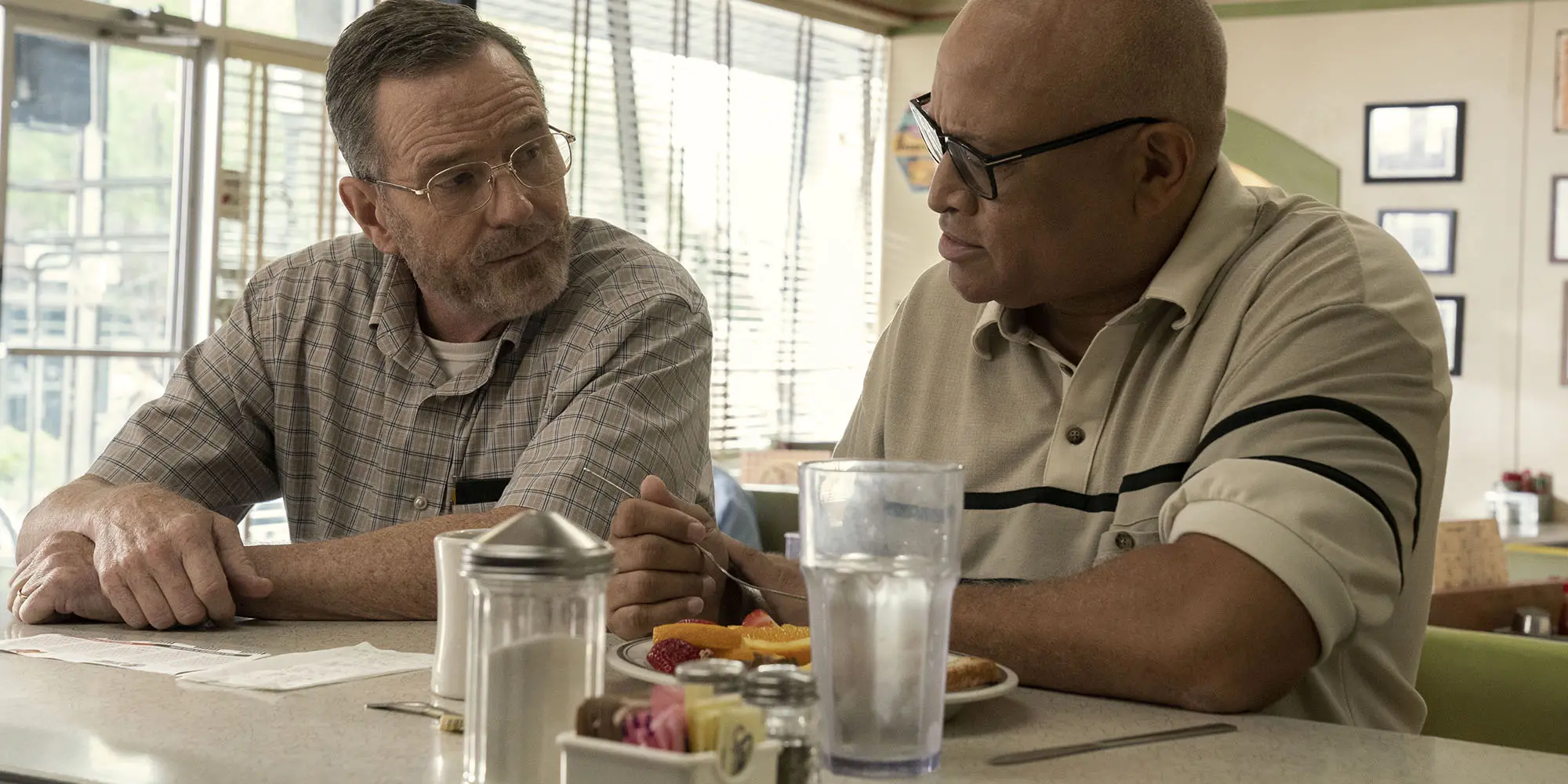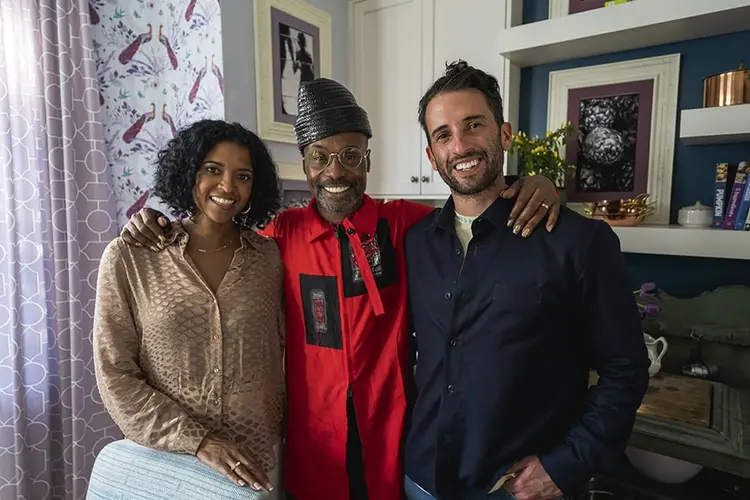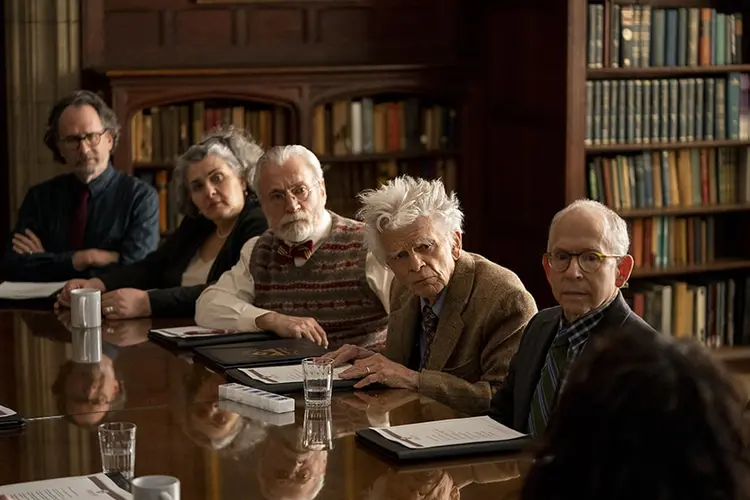
Movie Math: Tetali's Equations Seen in Film
Media Inquiries
In the movie, "Jerry & Marge Go Large," a man finds a legal loophole in lotteries. Carnegie Mellon University's Prasad Tetali(opens in new window) wrote the on-screen calculations to explain how the math behind that loophole works.
The movie, which was released in June and available to stream on Paramount+, is based on the true story of Jerry and Marge Selbee — played by Bryan Cranston and Annette Bening — who won more than $26 million from the Michigan Winfall and the Massachusetts State lotteries.
"I didn't know anything about either lottery so I went online, checked the rules and then figured out a solution," said Tetali, the Alexander M. Knaster Professor and Head of the Department of Mathematical Sciences(opens in new window) in the Mellon College of Science(opens in new window). "The actual math is a simple combinatorics and probability question at the undergraduate level."
Tetali's research focuses on probability theory, discrete mathematics and approximation algorithms. A fellow of the American Mathematical Society and the Society for Industrial and Applied Mathematics, he shared his explanation with the film's production team after they reached out to him for technical assistance.
Tickets for Winfall were $1, and players selected six numbers from 1 to 49. The jackpot was worth at least $2 million for tickets with all six numbers. Players who guessed between two and five of the winning numbers were awarded smaller prizes.
If no one selected all six numbers, the jackpot for the subsequent drawing would rise. When the jackpot rose to $5 million, something called a roll-down would occur and the jackpot would be split among the smaller prize winners during that drawing.
In weeks without roll-downs a ticket with three winning numbers was worth $5, but during roll-down drawings they were worth $50.
"Without roll-down, there's a 1 in 57 chance to win $5," Tetali said. "This gives an average dollar investment less than 20 cents in returns. But if it goes to roll-down and the prizes go up, a $1 ticket has a chance of winning $1.66 on average."
The trick was to purchase many tickets in accordance with the law of large numbers that states that the more times an experiment is repeated, then the result will be close to the expected underlying result. If someone flips a coin five times, then the results might be one head and four tails. But that same coin is flipped 5,000 times, the results would be closer to 2,500 heads and 2,500 tails.
"So, if you purchased 100,000 tickets then you would get $166,140 in return," Tetali wrote in an explanation to the film's production team. "Game on!"
What resulted in the movie was an overlay of some of Tetali's equations on the screen as well as a quick glimpse of his explanations on a napkin that Jerry (Cranston) shows to a friend Steve (Larry Wilmore) at a deli counter.
"There's a way to win every time. There's a loophole that they didn't see and it's right here in the math," Jerry tells Steve. "On the roll-down weeks the payouts to the lower numbers increases above the amount you would pay to play. So, the math is in your favor."
"For a brief detail, it was accurate," Tetali said. And, to tell a good story, it doesn't take too much math, he said.
Tetali joined CMU in 2021. Previously a faculty member at the Georgia Institute of Technology, he was a Regents' Professor and director of its algorithms, combinatorics and optimization Ph.D. program. He advised many graduate and undergraduate students as well as postdoctoral fellows.
Georgia — with Atlanta as its epicenter — made more major films than California in 2016. That same year, Tetali had his first taste of movie consulting.
"They first contacted me about 'Hidden Figures,'" Tetali said. "I was new to this business then and traveling, working with the movie. They were appreciative, and I told them what kind of math was involved and who the expert consultant should be — more aerospace engineers with orbital mechanics for the math/aeronautical engineering work."
"Hidden Figures" portrayed a fictionalized version of Katherine Johnson, Dorothy Vaughan and Mary Jackson, who worked at NASA during the 1960s. Tetali connected the film's art department with a doctoral student as well as helped secure books on different engineering topics to dress offices on the set.
Tetali said movies such as "Hidden Figures" and "A Beautiful Mind," which was released in 2002 and featured CMU alumnus and Nobel Prize winner John Nash(opens in new window), portrayed a positive view on the field.
"Those movies brought glamor to mathematics," he said.
Prasad Tetali
— Related Content —

Alumnus Noah Mitz, and HDR Michael Keaton Among the Winners at the 74th Annual Primetime Emmy Awards

Pittsburgh Film Features CMU Alumni, Faculty and Students

